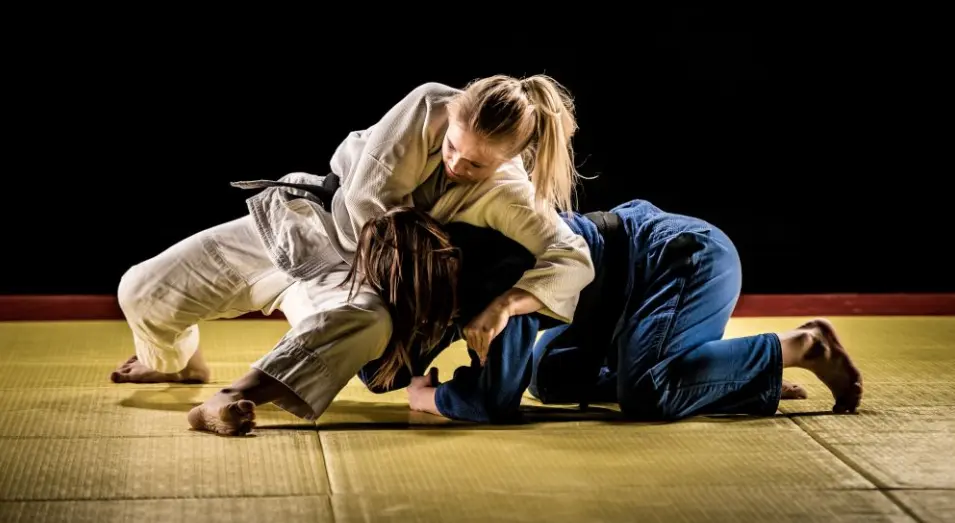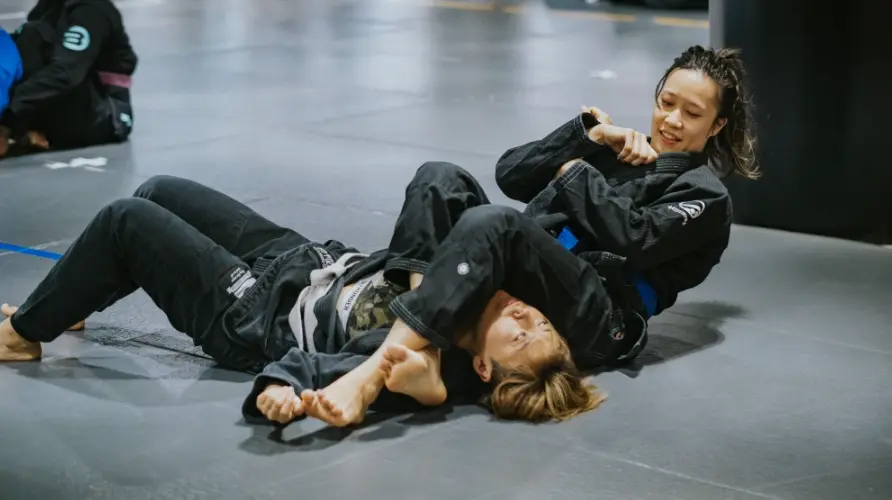The Role of Grappling in Self-Defense: Learning self-defense is essential for everyone. While punches and kicks often take center stage, grappling is just as vital and can be incredibly effective. In close combat scenarios where striking isn’t feasible, grappling can provide a significant advantage.
The Role of Grappling in Self-Defense
 Self-defense grappling encompasses various techniques aimed at controlling or subduing an opponent without the use of strikes. This can involve techniques such as holds, locks, throws, and pins. The main objective of grappling is to neutralize a threat by utilizing leverage, positioning, and body mechanics instead of relying solely on strength.
Self-defense grappling encompasses various techniques aimed at controlling or subduing an opponent without the use of strikes. This can involve techniques such as holds, locks, throws, and pins. The main objective of grappling is to neutralize a threat by utilizing leverage, positioning, and body mechanics instead of relying solely on strength.
Understanding the Basics of Grappling
Leverage and Positioning: Grappling is all about leveraging your body and finding the right position. When you use your body effectively, you can gain control over an opponent, even if they are bigger or stronger than you. Techniques like joint locks and chokeholds showcase this principle, as the right execution can swiftly neutralize an opponent.
Ground Control: A significant portion of grappling takes place on the ground. It’s essential to master controlling your opponent from different positions, such as guard, mount, or side control. This also involves understanding how to escape from tough spots and how to achieve more advantageous positions.
Submissions: A submission is a method used to make an opponent surrender, typically by inflicting pain or creating a risk of injury. Common examples are arm bars, kimuras, and rear-naked chokes. These techniques can swiftly and effectively conclude a fight.
Why Grappling is Essential in Self-Defense
Close Combat Advantage: In various real-life scenarios, conflicts can escalate into close-range encounters. When there’s limited room to throw punches or kicks, grappling techniques prove to be especially beneficial.
Control and Restrain: Grappling gives you the ability to manage and subdue an attacker while minimizing injury. This is crucial in scenarios where legal or moral factors suggest that using too much force should be avoided.
Versatility: Grappling is versatile and can be applied in many situations, whether you’re upright, in a clinch, or on the floor. It provides you with a wider array of techniques to address various challenges.
Key Grappling Techniques for Self-Defense
Clinch Fighting: This means positioning yourself near your opponent to manage their movements and stop them from landing effective strikes. Common techniques used in clinch fighting include underhooks, overhooks, and collar ties.
Throws and Takedowns: Taking your opponent down can really turn the tide in your favor. Moves such as the hip throw (O Goshi), single-leg takedown, and double-leg takedown are great techniques to help you accomplish this.
Joint Locks: These techniques involve applying pressure to an opponent’s joints, compelling them to give in or making the joint ineffective. Some popular joint locks are wrist locks, arm bars, and shoulder locks.
Chokeholds: Chokeholds limit the flow of blood or air to an opponent’s brain, which can cause them to lose consciousness if maintained for long enough. Two common types of chokeholds are the rear-naked choke and the guillotine choke.
Escapes and Reversals: Understanding how to break free from holds and turn the tables is just as crucial as mastering the application of those techniques. Skills like the shrimping escape and bridge-and-roll escape are vital for escaping tricky situations.
Training for Grappling in Self-Defense
Find a Good Instructor: It’s essential to learn from a qualified instructor. They offer practical guidance and help you practice techniques in a safe and correct manner.
Practice Regularly: Just like any other skill, mastering grappling takes consistent practice. By drilling techniques and sparring with partners, you can effectively put your knowledge into action during real-life situations.
Combine with Striking: While grappling is a strong technique on its own, adding striking skills to your repertoire enhances your self-defense abilities. Many martial arts, like Brazilian Jiu-Jitsu (BJJ) and Judo, successfully integrate both grappling and striking.
Conclusion
Grappling is an incredibly effective skill, but when paired with striking techniques, it enhances your self-defense abilities even further. Many martial arts, including Brazilian Jiu-Jitsu (BJJ) and Judo, blend these two aspects seamlessly. Mastering the fundamentals of leverage, positioning, and control allows you to handle threats efficiently, without needing sheer strength. Consistent training and practice are key to becoming skilled in grappling, equipping you for diverse self-defense scenarios.

Leave a Reply